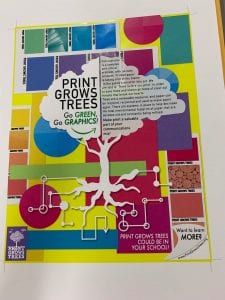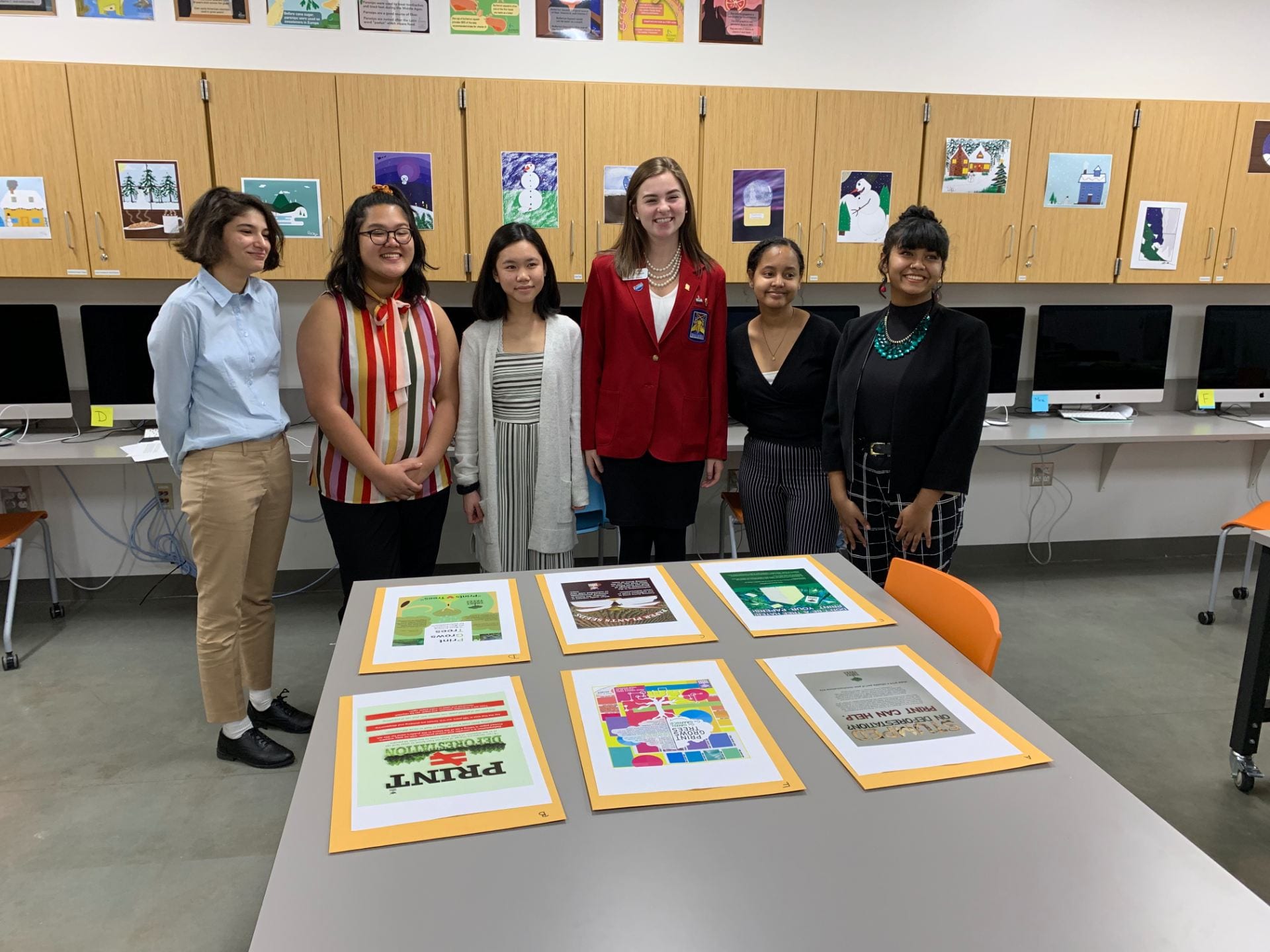Monthly Archives: February 2019
2019 SkillsUSA Graphic Arts Competition
OVERVIEW:
In today’s rapidly changing graphic arts industry, it’s important to stay on top of the latest trends and keep up-to-date with the newest creative software. Adobe’s Creative Suite is a top of the line package that mixes all the programs needed of today’s graphic designed. Students in the Graphic Design program at the Academies competed today in a two and half hour challenge as part of the 2019 SkillsUSA Graphic Arts Competition to test their use and knowledge of Adobe Indesign, Illustrator, Photoshop, and Acrobat.
ASSIGNMENT:
Students had to create a full color one-page print advertisement for the “Print Grows Trees” campaign, which is a strategic effort to raise awareness that printing on paper actually helps to grow trees and keeps our forests from being sold for development. It’s counter-intuitive, but by connecting the dots between print and private landowners, who own almost 60 percent of our nation’s woodlands, we’ll come to understand that the existing forestland with all its biodiversity could be better sustained if growing trees was a more profitable endeavor. This will only happen if there is more demand for paper. “Print Grows Trees” challenges the widely held belief that by using less paper, trees will be saved.
Students are to conceive, design, and execute a one page (8.5” x 11”) full-color print ad for the campaign. Students are allowed to choose from the supporting artwork provided to incorporate in their ad or else they can come up with some original art or background to use. They will also be provided some text copy that can be used as body copy for their ad. Finally, they must come up with an original slogan, used in the ad.
DESIGN:
Below are the four top designs, created by Julia Spewak, Paravi Das, Sarah Sheikhnureldin, and Ashley Ayeri. These competitors have earned a place in the state competition this spring in Virginia Beach.



Pizza Anyone?
There is a huge focus on authenticity when it comes to education, and you can’t get any more authentic than high schoolers and their connection to pizza. So why not build a brick oven? Our masonry class did just that.
When constructing a project of this magnitude there are several factors to take into consideration – the two largest challenges being the overall weight of the brick oven and the structural integrity of the arch. Traditionally bricks are laid and held in place with mortar to prevent them from shifting. Not in a brick oven – no mortar equates to no grit in your pizza. Using a wooden arch as a scaffolding, the bricks are laid at such an angle that when the support is removed they remain in place – defying gravity. Careful calculations and planning ensured we will be enjoying pizza at the Academies of Loudoun for years to come.
Prior to baking the first pie the oven will need to be fired at least three times, allowing the bricks to cure and any residual dust to be burnt off. Reaching temperatures up over 1000°, that inaugural pizza cannot be left unattended; it only takes a minute for pizza perfection.
Pictured below are students Jackson Donahue and Logan McKinney with the finished product.

